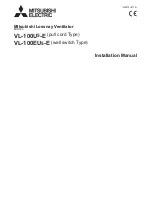
6.
To set the remote code with a small screwdriver or
ball point pen (neither included), slide dip switches
firmly up or down to same as receiver unit. (Figure 4)
NOTE: The remote unit has 32 different code
combinations. To prevent possible interference from
or to other remote units, simply change the
combination code in the remote and receiver.
NOTE: Factory setting is all up. Do not use this
position.
Remote
Dip Switch
Figure 4
How to Operate Your Ceiling Fan (continued)
14
7. Remote Control Speed (RPM) Setting
Process : (Figure 5)
1)
After installing and wiring the unit, restore power to
your fan by ensuring that the breaker and wall switch
that controls the power supply is moved to the on
position, press and hold the “LEARN” button inside of the
battery compartment of the handheld remote control for
1-3
seconds.
2)
You must press the “LEARN” button within 30 seconds
of restoring power to the fan.
3)
When restoring power to your fan at the wall switch
and breaker, DO NOT press any button(s) on the
handheld remote control before pressing the “LEARN”
button, otherwise the fan will fail the learn procedure.
4)
If you press any button(s) on the handheld remote
control before pressing the “LEARN” button, please turn
the wall switch that controls the power to the fan to the
off position then on again, and start the process
beginning with Step 1 above.
5)
When you press the "LEARN" button, the fan will make
one musical sound and light blink once if with light and
start to run beginning the control set up process.
6) DO NOT press any button(s) after pressing the LEARN
button while the fan is programming or it will fail to
program.
NOTE: If you want to change the blades: turn
WKHSRZHURIIĺFKDQJHWKHEODGHVĺWXUQWKH
SRZHURQĺSHUIRUPWKHFRQWUROVHWWLQJSURFHVV
7)
The fan will run in forward direction for approximately
3 minutes.
8)
When the fan stops running after approximately 3
minutes, the fan will make two musical sounds and light
blink twice if with light that means that the handheld
remote control and speed set up process is complete.
9)
The fan is now ready for normal use.
LEARN
Figure 5















































